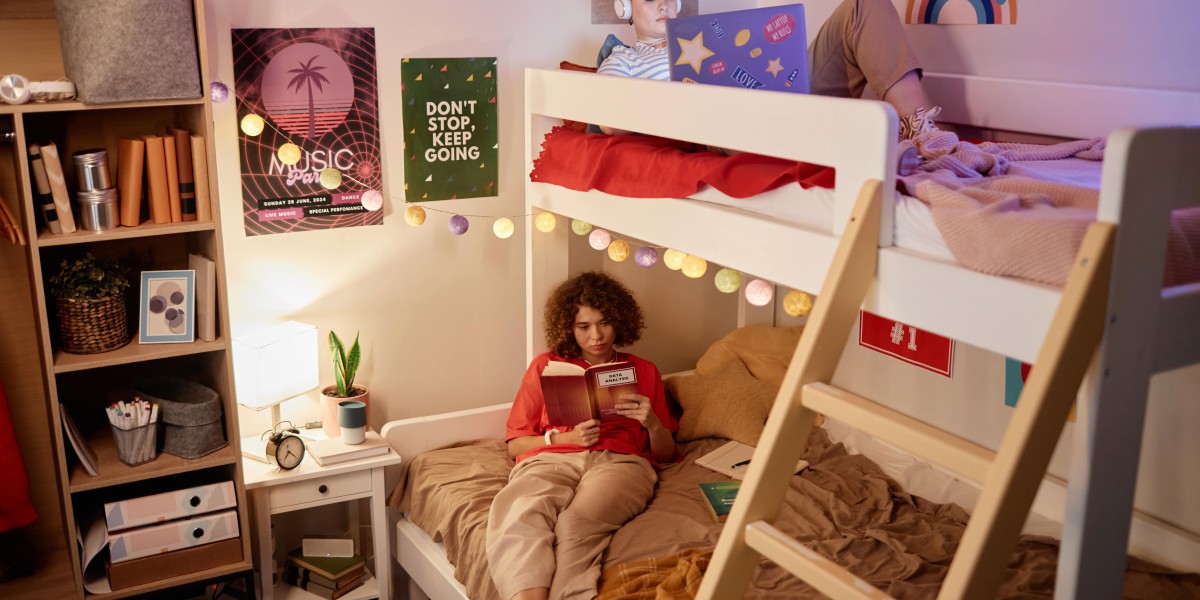The Ultimate Guide to Great Bunk Beds: Maximizing Space and Style
When it pertains to optimizing space, especially in smaller homes or shared bed rooms, bunk beds are an ingenious option that merges function with enjoyable. Whether for kids sharing a space or as a wise accommodation choice in guest spaces, bunk beds offer versatility, creativity, and effectiveness. This article digs into the different designs, safety factors to consider, and regularly asked concerns about bunk beds, providing a thorough resource for anyone considering this space-saving alternative.
The Many Styles of Bunk Beds
Bunk beds can be found in different styles and setups, dealing with various tastes and needs. Below is a detailed overview of some popular bunk bed styles:
| Style | Description | Perfect For |
|---|---|---|
| Standard Bunk Bed | A traditional design with two twin beds stacked vertically. | Kids' spaces, visitor rooms |
| L-Shaped Bunk Bed | Features an upper bunk directly over a lower bunk at an ideal angle, developing a corner setup. | Spaces with limited vertical space |
| Loft Bed | Just includes the upper bunk with an open space listed below for a desk, seating location, or storage. | Older kids, small areas |
| Futon Bunk Bed | Integrates a full-size futon at the bottom level with a twin bed above. | Multi-functional spaces |
| Triple Bunk Bed | Stacks 3 beds vertically, optimizes sleeping space even further. | Big areas with multiple children |
Advantages of Bunk Beds
Picking bunk beds can offer a variety of benefits, including:
- Space-saving: Perfect for smaller rooms, allowing more space for play or study.
- Economical: A single system providing 2 sleeping spaces can be more economical than purchasing 2 separate beds.
- Versatile Designs: Available in different styles and materials to match different design styles.
- Fun Factor: Kids typically like the novelty of sleeping in a bunk bed, adding a component of excitement to their bed room.
- Encouraging Sharing: Bunk beds can promote friendship amongst siblings or buddies.
Safety Considerations
While bunk beds are a wonderful alternative for making the most of space, security ought to always be a top priority. The following standards can help ensure safe use:
- Age Appropriateness: Bunk beds are normally developed for children aged 6 and older. It is vital to assess whether they are proper for the child's age and maturity level.
- Guardrails: Ensure that the upper bunk has guardrails on both sides, preventing unintentional falls during the night.
- Tough Construction: Look for bunk beds made from long lasting materials such as solid wood or metal, and ensure they comply with appropriate security standards.
- Suitable Mattress Size: Use the ideal size bed mattress to prevent gaps that could position a safety risk.
- Routine Checks: Periodically examine the bed for any loose screws, missing parts, or wear and tear, and resolve any problems immediately.
Selecting the Right Bunk Bed
When choosing a bunk bed, consider the following elements:

1. Space Dimensions
Measure the room to make sure the bunk bed fits easily while leaving space for other furnishings and movement.
2. Weight Capacity
Check the weight limitations of the bunk bed to avoid overloading and ensure sturdiness.
3. Material
Decide between wood, metal, or a combination of both, as they each provide different benefits in regards to visual appeals, durability, and upkeep.
4. Style Features
Some bunk beds feature added amenities like built-in drawers, stairs instead of a ladder, or perhaps move accessories for included enjoyable.
5. Assembly Requirements
Consider whether the bunk bed needs complicated assembly. Some may come fully put together, while others might need considerable setup time.
Frequently Asked Questions about Bunk Beds
Q1: Are bunk beds safe for young kids?
A1: Bunk beds are usually suggested for children aged 6 and older. Ensure safety functions like guardrails are in place and supervise children utilizing the top bunk.
Q2: How can I take full advantage of the storage space with bunk beds?
A2: You can select bunk beds with integrated drawers, or think about positioning storage bins or shelves under the lower bunk to optimize space.
Q3: Can adults use bunk beds?
A3: Yes, adults can utilize bunk beds, especially those developed with a full-size or queen-size lower bunk. Nevertheless, be sure to examine the weight limitations and durability before use.
Q4: How do I maintain a bunk bed?
A4: Regularly look for loose screws and overall structural stability. Clean the bed frame with moderate soap and water, preventing severe chemicals that may damage the finish.
Q5: Can I convert a bunk bed into separate beds?
A5: Many bunk beds are created to convert into two different beds, providing versatility in how the sleeping plans can be used over time.
Bunk beds are an outstanding option for those needing to effectively utilize space while enhancing the space's design and function. With various styles and configurations readily available, it's crucial to select a bunk bed that satisfies safety specifications and matches the space's aesthetic. By understanding the benefits, safety considerations, and upkeep requirements, households can make informed choices about including Great Bunk beds (58.221.13.198) into their homes. Furthermore, the satisfaction kids originate from bunk beds can transform a useful furniture piece into an amazing and valued part of their home.







